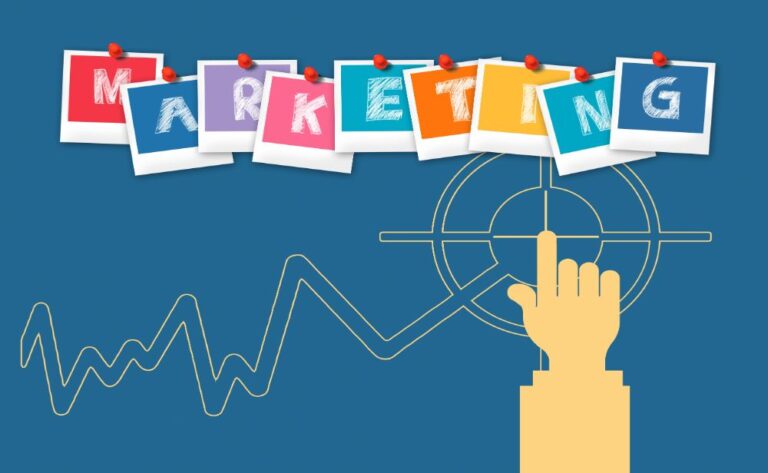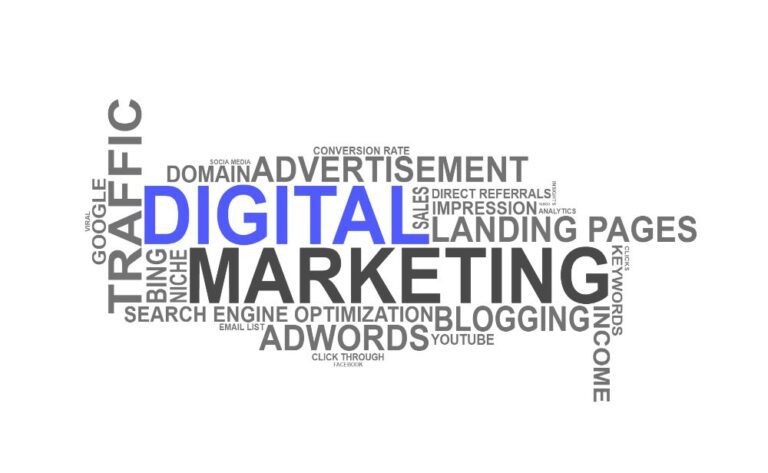The Ultimate Guide to PPC Marketing: What Is PPC Marketing?
Because it can deliver results right away, pay-per-click (PPC) advertising is a vital component of any search engine optimization (SEO) plan that is designed to be successful.
Did you know? Up to 80 percent more people will be aware of your company if you take the time to carefully construct PPC commercials, and 65 percent of clients will click through on paid advertisements.
PPC allows you to accomplish a wide variety of objectives. Pay-per-click (PPC) advertisements are used for a variety of objectives, the most popular of which are to improve brand visibility, find new leads, attract more traffic to your site, and increase conversions.
The most important reason to put money into pay-per-click (PPC) advertising, despite the fact that there are many other good reasons to do so, is expansion. PPC is quite simple to implement, but it does require some forethought and organization in order to be successful.
In this section, we will examine all of the necessary components that go into making a Pay-Per-Click (PPC) marketing strategy that is effective and long-lasting.
The following topics will be discussed in our comprehensive guide to PPC:
• PPC: Important Terms
• The advantages of pay-per-click (PPC) advertising
• The various types of PPC campaigns
• The various platforms for PPC advertising
• A comparison of PPC and organic advertising
• A step-by-step guide to the creation of a PPC campaign
• PPC campaign strategies and examples
PPC marketing: Important terms
Before we get any further into our PPC guide, let’s take a look at some fundamental phrases that are used in PPC marketing that you need to be familiar with.
Utilizing search engines in order to sell your brand, services, or products to specified target audiences by using paid and organic marketing tactics. This is referred to as search engine marketing (SEM).
Price Paid For Each Click (CPC)
How much money it takes for your pay-per-click ad to generate a single conversion, often known as a sale.
Cost Per Mille (CPM)
This concept is sometimes referred to as the “cost per thousand.” Advertisers and marketers pay a set amount for every one thousand times their ad is displayed when using a CPM pricing model.
Ad Rank Refers to the position on a search engine results page where your advertisement will ultimately be shown (SERPS). Your ad rank is determined by multiplying your quality score by the highest amount you are willing to bid per click.
Quality Score is a metric that determines how relevant an advertisement for pay-per-click marketing is.
Bid
The most money or budget that a pay-per-click (PPC) marketer is willing to spend on each click on an advertisement.
Ad groups are the categorization or division of the keywords used in your PPC advertisements into specific groups according to their subject matter.
Landing page
When a user interacts with a paid advertisement, they will be directed to a certain webpage or destination when they click through.
A dissection of what makes up a PPC campaign
Now that you’re familiar with the most important concepts related to pay-per-click (PPC) marketing, we’re going to take a look at the structure of an effective pay-per-click (PPC) campaign.
As you can see, a well-balanced pay-per-click (PPC) campaign is comprised of four essential components. Here you have:
• The primary headline has the primary keyword “wedding dresses” (loaded at the front), and it explains to the user exactly why they should click on the advertisement.
• The display URL includes both the brand name and the primary keyword. It is succinct, concise, and easy to scan.
• The first description can be found at the beginning of the body copy of the advertisement.
• The second description makes up the following or final section of the ad’s body copy. It provides additional insight into the headline and also includes the primary key term. This presents an opportunity to highlight unique selling propositions, detail specific motives to click, and conclude with a powerful call to action (CTA).
You have the ability to set a variety of characteristics from the backend, such as:
• Headlines
• URL
• Description lines
• Target demographics
• Target regions and locations
• Target keyword
• Maximum bid
• Target demographics
• Target places and areas
The advantages of using PPC into your various marketing efforts
You can reach a larger target audience quickly while earning a healthy return on investment (ROI) for your efforts; you can appear at the top of specific SERPs pages almost instantly and start earning traffic; you can connect with ‘warm’ leads that are likely to engage with your brand and buy your services or products by reaching them at the right stage of their journey; you can use your PPC data to improve your overall marketing strategy; and you can appear at the top of specific SERPs pages almost instantly and start earning traffic. The
PPC campaign kinds that are absolutely necessary
In the following section, we will discuss the various pay-per-click (PPC) strategies that you can incorporate into your overall digital marketing plan.
Search
Ads for search-based PPC campaigns are those that appear in search engine results pages (SERPs), similar to the example of bridal dresses that we looked at earlier.
PPC advertising that are based on searches often take up the top left or right corner of the page that displays search results. These ads typically have a headline that can be clicked on, as well as a URL and some body copy.
Display PPC display advertising are organized in a manner that is comparable to that of search-based campaigns; however, these ads also incorporate a visual component to increase the number of clicks and overall engagement. Images or images may be included in these types of PPC advertisements (often in the form of banners).
Customers who have shown interest in a certain landing page, service, or product in the past will be targeted by pay-per-click (PPC) remarketing advertising, which are typically displayed in an ad format similar to display ads but are structured or programmed to communicate with those customers.
You have a better chance of turning a warm lead into a sale if you target a consumer with retargeting and increase the likelihood that they will make a purchase. When you employ retargeting, individuals are up to 70% more likely to invest in your product or service, according to a study that was conducted by Semrush.
Supported social event
You are able to add your content and configure your ad specifications prior to launching a campaign using paid or sponsored social media advertising, which function in a manner that is analogous to search ads. Advertisements on social media are tailored to each individual platform (Facebook, Instagram, Twitter, LinkedIn, etc.), and you can check the native analytics data for each channel to determine how well your ads are doing.
This exact illustration is a sponsored post on Facebook. The advertisement is designed in the style of a carousel and includes a personalized body copy. It also features a variety of products that have been curated and a call-to-action button that reads “Shop Now.”
Video
You can utilize sponsored video advertisements on search engines in addition to using them on a variety of social media platforms. Paid video advertisements, similar to paid static advertisements, comprise a title, body copy, a call-to-action button, and, of course, engaging video content to persuade visitors to interact with the advertisement.
The preceding is an illustration from Gym Pro Luxe. It instantly describes the unique selling propositions and benefits of the products, and it contains a slick, demonstrative marketing film that has a call to action positioned neatly underneath it. This particular advertisement takes the shape of sponsored content shared on social media platforms.
Shopping Paid The retail adverts on Google are quite visually appealing and are displayed in a carousel arrangement directly above the main search engine results list. These ads, which are often comprised of the product price, a headline, and the brand name, are brief and to the point. Users receive them depending on the searches or buying intentions they have expressed.
PPC platform providers
After going over the primary categories of PPC ad content, the next step is to investigate the primary pay-per-click (PPC) platforms that are available to you for use with your campaigns.
AdWords and Ads on Google
For developing and distributing the content of your pay-per-click (PPC) plan based on search engines, Google Ads or AdWords is an indispensable tool.
This user-friendly platform gives you the ability to conduct in-depth PPC keyword research, establish campaign budgets, and create targeted advertisements in a variety of forms, including text-based search, display, video, banner, and shopping.
Budget: Campaigns that use Google Ads typically have a cost per click (CPC) that ranges between $1 and $2 on average.
Bing
Bing is still one of the most widely used search engines in the world, despite the fact that it is not quite as well-known as Google. Having said that, posting PPC marketing material on the platform will provide you with the resources necessary to interact with a larger audience, which you can then convert into paying clients.
The pay-per-click (PPC) advertising platform for the search engine was once known as Microsoft Advertising before being rebranded as Bing Ads. The interface is intuitive, and it has many similarities to the Google Ads platform in terms of its functionality. The most advantageous feature of Microsoft Advertising is the capability to directly import campaign content, information, and data from Google Ads or AdWords into Bing. This is available to users of both platforms. As a result, you are able to execute concurrently similar campaigns on both PPC platforms in order to achieve maximum engagement.
Regarding your financial plan, the typical cost per click (CPC) for a paid ad on Bing or Microsoft is $1.54.
As a result of Facebook’s continued popularity among a wide range of user demographics across the globe, it has become a prominent social media-based PPC platform that also has the potential to be lucrative.
You may define your target demographics, target areas, ad lengths and budgets, and of course, ad content. The process of setting up campaigns with Facebook ads is a simple one, with dropdown boxes and text boxes that allow you to set these parameters.
Budget: The typical price of a purchased advertisement on Facebook is $1.72. However, the cost can differ slightly depending on the specific market niche, business, or sector.
PPC vs organic
A digital marketing plan that is consistent, creative, and balanced needs to include both pay-per-click (PPC) advertising and organic advertising.
Paid search is more direct than organic search in many respects and produces immediate returns in terms of brand exposure, engagement, and conversions. On the other hand, if you do not make use of organic marketing or advertising, you will miss out on a wide variety of opportunities to strengthen your brand and to inspire client loyalty. To help you get a handle on both paid and organic search engine optimization, here is a simple comparison guide:
Developing a pay-per-click (PPC) marketing campaign
The following are the basic elements to establishing a successful pay-per-click campaign, which you can use as a roadmap to help you achieve success with pay-per-click (PPC) marketing.
Step 1: Beginning with Website Optimization It is imperative that before beginning any pay-per-click (PPC) campaign, you first take a step back and address the landing pages that will operate in conjunction with your advertisements.
Why is it so important? Because potential customers click on a pay-per-click advertisement (PPC ad) because the content of the advertisement impressed them, and they want to learn more about it. However, if the link that they click directs them to a page on your website that is unrelated or generic, such as your homepage, then it is likely that the prospect will leave your website.
When a user clicks on a pay-per-click (PPC) ad, they are indicating that they are interested in learning more about the subject of the ad. For this reason, it is vital to design customized landing pages that correspond with the content of the ad. For instance, if you were running a pay-per-click (PPC) ad at your restaurant offering two pizzas for the price of one, the landing page for the ad should include additional information about the promotion, a coupon to redeem the free pizza, or something else that is directly relevant to the content of the advertisement.
You also need to optimize the speed of your landing pages since potential customers will not stick around if they click on your advertisement and are taken to a page that does not load quickly, is difficult to browse, or has any other type of technical issue.
Invest some time and effort into optimizing your website conversion rates right now so that visitors to your site in the future are more likely to complete the desired action.
You can increase the number of conversions your website achieves by optimizing it in the following ways:
• Use calls to action that are clear and compelling;
• Use a simple design with lots of white space;
• Write headlines that are compelling and attention-grabbing;
• Write copy that is clear and straightforward;
• Use video and images strategically to retain attention;
• Make information easy to digest by using bullets, stand-out quotations, and visuals.
Step 2: Choose a Bidding Strategy
There are a range of various bidding methods available, and picking the one that’s ideal for you will rely on a number of different things, such as your available funds, the amount of expertise you have with PPC, and the things you want to accomplish.
You’ll have to choose between manual and automated bidding as one of the very first options available to you. If you have never done pay-per-click advertising before, you might want to consider beginning with manual bidding. This is especially true if you are dealing with a limited budget, as manual bidding enables you to place a limit on the amount that each click will cost you. When you choose manual, you forfeit the opportunity to optimize your bids, which is one of the drawbacks of this method.
On the other end of the scale is automatic bidding, which will lessen the amount of time you will need to invest into administering the campaign; nevertheless, you can end up spending a little bit more as a result.
When it comes to automatic bidding, there are a few different bidding tactics that may be utilized, and you can learn more about the various AdWords strategies by contacting Google directly. If you want to boost conversions, visibility, or traffic, you have a number of different techniques from which to choose. In essence, there are many different strategies you may choose from.
Step 3: Set a Budget
The budget is an essential component of a pay-per-click (PPC) campaign; nevertheless, the most advantageous aspect of this form of advertising is that it can be executed successfully even with a constrained budget, and you can exercise a high degree of command over the amount of money that is spent.
You can begin with as little as a $25 investment even if you are unfamiliar with PPC, don’t have a lot of extra cash lying around, and simply want to test the waters. Using this straightforward technique, you may determine an appropriate amount for your budget:
The part of the equation that deals with profit entails determining how much money you make off of each conversion. In order to calculate the commission that will be required to pay for the advertisements, you will first need to decide how much of that profit you are willing to forego while still maintaining the viability of the campaign.
You will need to look at data from the past in order to determine your conversion rate, but you may also use the industry standard, which Search Engine Watch cites as being 2.7 percent. After that, calculate your budget by multiplying the maximum CPC by the number of clicks that you ideally desire, then multiplying that amount by the number of days (at least a month is recommended).
Step 4: Do Some Research on Your Keywords, and Select Them Carefully
Because it serves as the foundation for the entire process, keyword research is widely regarded as one of the most essential components of a pay-per-click (PPC) advertising campaign. If you don’t provide the search engine with any keywords, it won’t be able to determine when to show your advertisements. If you need assistance in this area, be sure to have a look at our SEO Keyword Research Toolkit.
Equally as crucial, selecting the appropriate keywords may virtually ensure that your advertising campaign will be successful. Doing so will also ensure that you receive the most views, the most click-throughs, the most traffic, and the most conversions. The following are some pointers to consider when selecting keywords:
• Take a look at the strategies that your competitors are employing.
• Consider the terms that you would search for if you were a potential client seeking for your goods or services.
• Use Google’s keyword search or another tool to uncover chances (both Moz and Semrush offer excellent keyword tools);
• Be particular with your keywords rather than general or ambiguous;
• Choose local keywords whenever it is feasible to do so;
• The more skillfully you select your keywords, the higher the number of hits you’ll receive. In addition to this, you will be rewarded with a higher quality score as well as a decreased cost per click as a direct result of your efforts.
Negative keywords are an additional crucial component of the keyword selection process because using them will filter out the keywords that you do not want to include. For instance, if you want to advertise ice cream but you don’t sell soft serve, you may use the term “soft serve” as a “negative keyword” to prevent your ads from appearing in searches for products of that particular sort.
Step 5: Create a Killer Ad
Now that you have your landing page prepared, have settled on a spending limit and a bidding structure, and have chosen your keywords with great care, it is finally time to start working on the real advertisement. Because there is not a lot of space or time available, one of the most important things to keep in mind is to make it brief and to the point. This is because you are competing for the attention of potential customers.
Having a specific objective in mind and writing the content with that objective in mind is another essential component. For example, if you want to enhance sales for Father’s Day, the ad language for your business should indicate that you will be holding a sale in honor of Father’s Day. You don’t have to be particularly inventive, but you do need to get and keep their attention, maintain their interest, and tickle their curiosity.
Consider coming up with a one-sentence summary of the ways in which customers will benefit from your one-of-a-kind value proposition, which will help you attract more attention to your offering and differentiate it from those of your competitors. Going back to the example of Father’s Day, perhaps you have a unique instrument that fathers adore but that no one else stocks, and you can highlight this instrument in your advertisement.
Step 6: include a call to action (CTA)
The call to action is one additional aspect of the advertisement creation process, and it is significant enough to have its very own section. There is no use in displaying the advertisement if there is not a call to action (CTA) because the CTA instructs interested prospects on what they should do next. The call to action (CTA) might be brief and catchy, but it must be understandable, unambiguous, and convincing, such as “purchase now.”
Check the performance of your advertisements in the seventh step.
Unfortunately, even if your advertisements are live and functioning, your job is not yet finished. In point of fact, this is when the real work begins, which includes tracking your advertisements, measuring how well they are doing, and modifying them as required to achieve the desired outcomes.
A/B testing is a fantastic method for accomplishing this goal since it enables you to simultaneously run two almost identical copies of the same advertisement, each with one significant modification. You are free to change almost any aspect of the landing page, including the copy, the call to action (CTA), the keyword, and even the page itself. However, after you have determined which version is more successful, you can make the appropriate adjustments and cease wasting money on the advertisement that is less effective.
PPC campaign methods & examples
Now that you have the fundamental information you need to create a PPC campaign, we are going to examine three successful PPC marketing campaigns to serve as examples for you to model your own efforts after.
Both Wolfgang Digital and Trend Micro are Here to Help
Together with Wolfgang Digital, Trend Micro launched a brand-building B2B pay-per-click advertising campaign in an effort to enhance its presence on Google Ads.
Wolfgang Digital assigned artificial revenue values to lead actions based on a predetermined priority list in order to encourage Google’s smart algorithm to allocate more budget to the brand’s higher intent prospects while continuing to drive new audiences into the funnel. This allowed Wolfgang Digital to continue to drive new audiences into the funnel (developed based on the prospective value of various user interactions).
UberEats and Google Ads are two examples.
The “Tonight I’ll be eating” campaign was developed with the intention of enhancing UberEats’ brand recognition among celebrities as well as significant cultural occurrences. The food delivery colossus provides access to a wide variety of inventory resources thanks to its integration of display and video 360 technology.
“Display & Video 360 enables us to carry out all of our operations with just a single container. Because of this, we are able to exercise a significantly finer degree of control over the frequency and reach of our entire media buy. In addition to this, it improves the team’s operational efficiency. —Joe Fried, UberEats’ Global Digital Director at MediaCom, which is also the company’s campaign partner
In a market that is becoming increasingly competitive, UberEats was able to increase their campaign reach by 10% thanks to the dynamic and brilliantly visual PPC strategy.
Microsoft Advertising and Air France Advertising
During the course of the Covid-19 pandemic, the tourism industry was struck with a severe blow. Air France turned to Microsoft Advertising, the PPC platform that is part of Bing, in order to rebuild its brand reach and encourage customers who were on the fence about taking vacations.
Air France took advantage of the MSAN feature of the platform in order to increase incremental conversions with its campaign assets. This was accomplished by building a creative mix of PPC advertisements with the goals of acquiring new consumers and showcasing the advantages of air travel.
Air France had a decline of 29% in their overall cost-per-acquisition as a result of this strategy, which led to an increase of 3% in their incremental conversions in 2021.
We knew we would have access to a quality audience that could not be targeted in any other way because MSAN is only available through Microsoft Advertising. Because of this, we were confident that we would have this access.
—Nicolas Pestourie, Deputy Head of Paid Search at Performics (Air France’s campaign partner)
The Final Word on Pay-Per-Click Marketing
PPC is not particularly challenging, but it does call for some familiarity with the underlying technique in order to be successful. If you want the most return on investment (ROI) from your efforts, it also requires a significant amount of planning and investigation on your part.
The most important things to keep in mind are, first and foremost, to optimize your landing page before doing anything else, and then to choose a budget and a bidding strategy after that. After that comes the difficult but not insurmountable chore of researching and selecting the appropriate keywords.
After this, you will start making your advertisement. To ensure that your pay-per-click (PPC) efforts are providing the amount of traffic, conversions, or leads that you deserve, you will need to track, measure, test, and alter them after the advertisement has been published.







